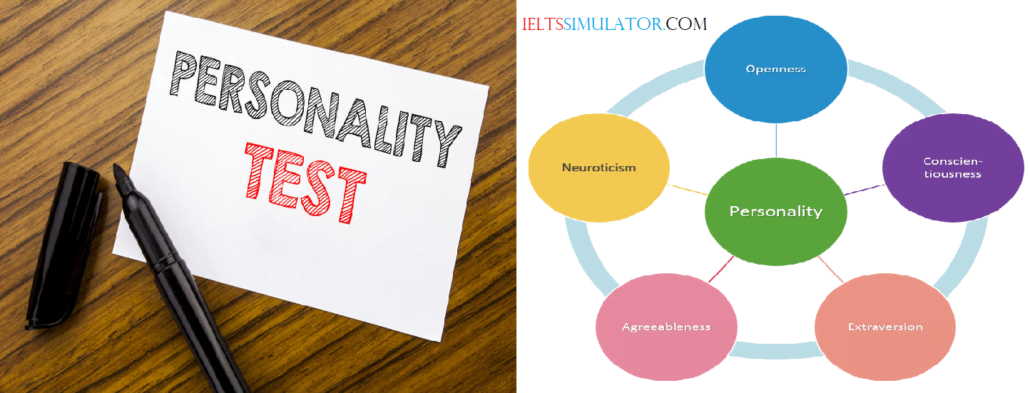
IELTS LISTENING S64T4
HOTELS
I’m sure at some point in your lives you will have completed a personality test, whether for professional reasons or purely for fun. Such personality assessments are abundant. They pervade our Q31 everyday lives since there Is a fundamental human need to understand the motivation behind our own and others’ behaviour. Learning how to assess personality permits greater understanding of the motivating factors affecting the way we communicate and Q32 co-operate with others in addition to how we relate to others on a personal level. So now that we’ve talked about why personality tests are so important, let’s take a look at the most well-known tests and see how they compare.
Audio PlayerAttempt full listening test…
Well, first off we have a favourite of careers officers and potential employers alike – the graphology test The word ‘graphology’ is derived from two Greek words meaning ‘writing’ and ‘word’. Essentially, it is an assessment of personality based on handwriting analysis, How an Individual dots his ‘i’s or crosses his ‘t’s, in addition to whether writing is slanted or level, is believed to be indicative of the individual’s personality. Whatever your opinion may be of this method of personality assessment, at least it has stood the test of time. The graphology test as a measure of personality was first proposed by a certain Juan Huartede San Juan as far back as 1575 and It has seen fluctuation in its popularity since then. In the 20th century, Alfred Binet was so convinced as to its validity that he termed it the ‘science of the future’ and indeed today it is still a very popular method of personality assessment. Its validity though, as a measurement of character, is dubious. The British Psychological Society has even gone so far as to rank graphology alongside astrology, giving them both Q33 ‘zero validity‘. A major problem with the test is that an Q34 element of subjectivity enters the assessment of certain criteria in the test, such as ‘harmony’ and ‘style’ of writing. However, in its favour, the test is relatively quick and easy to administer.
Next, let’s look at the Rorschach or Ink blot test which is one of the better known tools of psychological assessment. Popularised in party game versions of the test, the Rorschach test has received mixed reactions amongst psychologists. Whilst many dismiss the test as a ‘pseudoscience’, it is nevertheless used by prestigious mental Q35 health organisations, such as the Tavistock Clinic, as a valid tool for personality assessment. Admittedly, assessing someone’s character based on their reactions to a series of ink blots on pieces of card might seem somewhat ludicrous. Whilst there is a tried and tested methodology behind the construction of the test and assessment of individual responses, the test Is subject to Q36 cultural bias. The perception of the cards’ contents is liable to be biased by cultural factors making the individual responses somewhat meaningless.
So, moving onto a test that has similar features to the Rorschach test, let’s look at the Luscher Colour test. As with the former test, the Luscher Colour test assesses an individual’s subjective reaction to a series of cards. However, unlike the Rorschach, the Luscher test consists of a series of Q37 coloured cards that the individual has to rank in order of preference. How the individual ranks the different colours is believed to be indicative of their personality. Whilst some believe the test to smack of pseudoscience and many question its validity, there is, however, a biological basis to the test which makes it more of a Q38 convincing tool of psychological assessment than many other personality tests. Certainly, its use by psychologists and doctors, as well as authorities, such as government agencies and universities, to screen their candidates would seem to be a strong argument for the validity of the test. A major plus to this test is that it is so accurate that it is even sensitive to mood change. Individuals, therefore, taking the same test at different periods of time will see a correlation between results and mood.
Finally, I would like to refer to the TAT test or the Thematic Apperception Test, to give it its full name. On the face of it, it is a very simplistic test. As with the Rorschach and Luscher tests, the individual Is dealt a series of cards. However, on these cards are depicted a series of ambiguous scenes involving Q39 groups of people. The Individual is required to make up a story about each, and the individual Is then assessed based on the content of each story. Whilst the test is quick and simple to administer, critics of the test argue that there is a Q40 lack of standardisation of the cards and scoring systems, making comparisons between individuals problematic. This, therefore, undermines the validity of the test. Nevertheless, the TAT test is still used as a tool in fields as diverse as psychological research into occupation preference and partner selection and forensic examinations to evaluate crime suspects.
It is therefore a matter of individual preference as to which test is used when employed for professional reasons. All these tests, though, have their benefits and their drawbacks. No one definitive test exists that provides 100% accuracy in assessing personality.